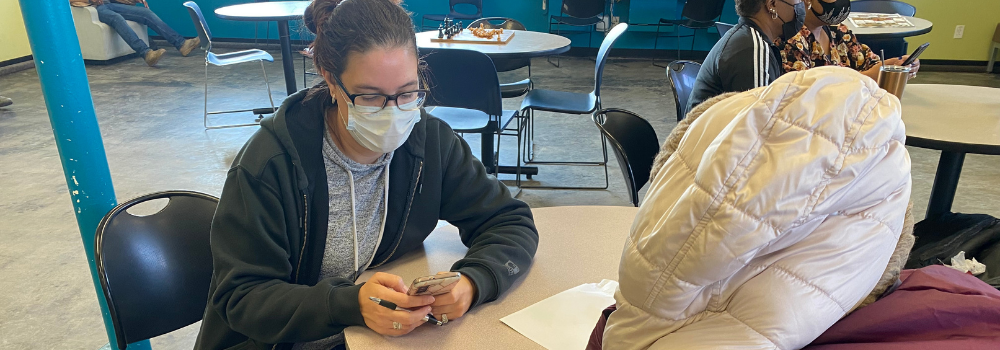
“So many people are one paycheck away from homelessness. COVID-19 has increased that.”
That trend has come to light during the past two Point-in-Time Count surveys, according to Tracy Lockett, Homeless Outreach Supervisor at Kim Wilson Housing.
The Point-in-Time Count is a nationwide annual census of people experiencing unsheltered homelessness in a community over a 24-hour period. A person experiencing unsheltered homelessness sleeps in a place not designed for or ordinarily used as a regular sleeping accommodation, according to the U.S. Department of Housing and Urban Development (HUD).
Volunteers from Kim Wilson Housing, the Kansas City Kansas Police Department and Cross-Lines Community Outreach hit the streets of Wyandotte County together on March 2 and 3 with the goal of gaining a better understanding of the scope of homelessness in our community. Service providers in Kansas City, Missouri, completed their count at the same time, providing a more complete look at homelessness across the Kansas City metro area.
"There will always be pockets of people we don’t find. A lot of the people who are the most vulnerable – they are the hardest to find. But I think we’re reaching a good number of the people who are homeless in our community.”
Point-in-Time Count census takers visited a number of locations across Wyandotte County, including Frank Williams Outreach Center, the Willa Gill Center and public library branches, to find and speak with individuals experiencing homelessness. Outreach teams also spread out across the county, visiting places where people camp and completing surveys. While official results of this year’s count won’t be available for a few months, preliminary data shows there was a significant increase in the number of individuals surveyed this year compared to the past several years.
While the Point-in-Time Count is not an exact science, it is an important tool for understanding the size and scope of homelessness in Wyandotte County.
“I’ve been a part of the Point-in-Time Count for the past 7 years and I can see a huge difference in the intentionality of it, especially the outreach portion,” says Lockett. “We start planning for this in the summer with all of the outreach workers coming together and planning where they will be going. There will always be pockets of people we don’t find. A lot of the people who are the most vulnerable – they are the hardest to find. But I think we’re reaching a good number of the people who are homeless in our community.”
Lockett, along with more than a dozen staff from Wyandot Behavioral Health Network, spent hours conducting surveys with individuals experiencing homelessness. The survey seeks to identify demographic information of individuals who are homeless, as well as understand the frequency with which a person experiences homelessness. Since the onset of COVID-19, the survey also now includes questions about if the pandemic is a factor in someone being homeless.
The results of the survey are submitted to HUD and determine the level of federal funding a region receives for its efforts to prevent homelessness. But Lockett says the Point-in-Time Count also helps with raising awareness of the issue of homelessness in our community. She says that for anyone interested in helping to end homeless, donating or volunteering with a local nonprofit is a great place to start.
